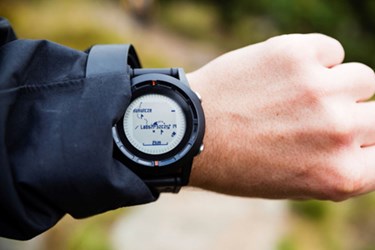Report: Pharma Is Most Resistant To Mobile Technology Use In Clinical Trials

By Ed Miseta, Chief Editor, Clinical Leader

There are several technologies that promise to improve the ease and efficiency of conducting clinical trials in the future. The one that seems to hold the most potential for also easing the burden on patients, and helping sponsors with patient recruitment and retention, is mobile health technologies.
SCORR Marketing recently partnered with Applied Clinical Trials to conduct a follow-up mHealth survey to one performed in 2015. The goal was to delve deeper into the technology, with a special emphasis on wearable technology. Respondents to the survey came from a variety of institutions including sponsor companies, CROs, academia, service providers, consultancies, hospitals, and research sites, with individual responders working in management, R&D, business development, regulatory, quality, and more.
The respondents also noted they have conducted trials across a variety of therapeutic areas, including oncology, cardiovascular, neurology, respiratory, endocrinology, and infectious diseases. Eighty-four percent are conducting trials in the U.S., with Western Europe, Eastern Europe, Asia, India, Australia, and South America being the next most popular areas.
A few of the findings certainly bode well for the future use of mHealth technologies in clinical trials. When asked if the positives of wearables outweigh the negatives, 95 percent of respondents said yes. Another 91 percent noted in three years, their company would be using wearable devices more often than they do today. Thirty-six percent said the devices would be used for monitoring, 5 percent said they would be for drug delivery, and 60 percent indicated they would be used for both.
While the future of wearables in trials looks bright, current adoption continues to be slower than many would hope. Only 31 percent of respondents report having used a wearable drug delivery device in a clinical trial in the past year. The news is slightly better on the monitoring side, where 41 percent report using a wearable in a trial.
Most disappointing might be one question, which asked respondents whether they were familiar with pilot clinical studies using wearable devices. Fifty-two percent indicated they were not aware of any such study.
So where does the problem with less than stellar adoption rates reside? The survey attempted to determine that pain point by asking respondents which group in the industry is the most resistant to wearable devices. Not surprisingly, 38 percent pointed to pharma companies, with just 22 percent citing clinical sites and 15 percent pointing a finger at patients. Interestingly, it was not just CROs and academia citing pharma as being most reluctant. Two in five (43 percent) respondents from pharma companies also identified that group as being the most reluctant to implement these technologies. Those pharma respondents were also the group that was most likely to note they were not aware of a pilot clinical study using a wearable technology, and were the least knowledgeable about their company’s use of wearable monitoring devices during clinical trials.
There are a myriad of reasons why sponsor companies might still be reluctant to incorporate mHealth technologies into a study. SCORR’s survey found 76 percent of respondents very or somewhat concerned about the cost. Seventy-three percent expressed similar concerns over patient compliance. In any clinical trial the data collected is what will result in an FDA approval or denial, and that was also reflected in the responses. Sixty-nine percent noted they were very or somewhat concerned over both data context and data security.
Data context was identified as the concern least likely to be sufficiently addressed in the next three years (noted by 58 percent of respondents), followed by patient compliance (38 percent), costs (35 percent), and data security (33 percent).
Different groups also did not express the same level of concern for the identified pain points. For example, respondents working in R&D were found to be more than twice as concerned about data security than those identifying as clinical directors. Companies headquartered in the U.S. were also found to be very concerned about data security, with 31 percent noting they were very concerned. This was twice the rate noted by individuals at companies headquartered outside the U.S.
Individuals from academia were more than twice as likely to be very concerned about costs than respondents from service providers, while CROs were the group most likely to be very concerned about patient compliance as well as environmental factors.
Despite these findings and the concerns noted, the future does look bright for wearables. Most of the concerns are in areas expected to be addressed in the next three years, and at that time nine out of ten survey takers believe their companies will increasingly be using these technologies, for both monitoring and drug delivery. Sometimes change can come slowly, but just getting more of these devices in the hands of patients will be a win for both the industry and those taking part in trials.
The complete report can be viewed here.
